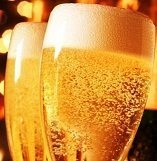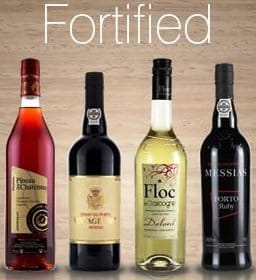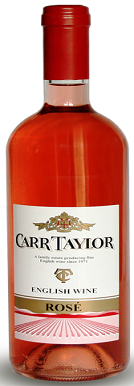Wine is the fermented juice or beverage made of freshly gathered ripe grapes. During the fermenting process, the yeast transforms the sugars in the fruit to alcohol and carbon dioxide and also extracts the flavor of the fruit. Wines are not refined. Aging process of wine always ensure the improvised flavor of wines. Basically after processing of wine, all wines are aged in the cask for a year and then they are sent for bottling and then again aging can continue.
Wine also could be produced from other sugar containing fruits, such as blackberries, cherries, or elderberries.
Characteristics of Wine
 One wine is distinguished by color, body, bouquet, taste, name, and vintage from another wine. For example, wine can either white or red according to age, grape variety, and the length of aging time.
One wine is distinguished by color, body, bouquet, taste, name, and vintage from another wine. For example, wine can either white or red according to age, grape variety, and the length of aging time.
The outer part (body) of the wine bottle will often tell the thickness or thinness of the wine. For example, a light wine flows quickly when it is swirled whereas a full-bodied wine flows slowly if it is swirled. With the help of tongue the light-bodied or full-bodied quality also can be understood.
Wine always comes with distinct flavor ranging from very dry (not sweet) to very sweet. Dry wine is produced after performing a complete fermentation process and when the fermentation process is intermittent then sweet wine is produced.
How Wines Are Named
All Wines are named on their labels considering the following 3 factors:
- By the predominant variety of grape used (varietal). (Ex- wines with varietal names are Pinot Noir and Chardonnay).
- By their generic names or named after the geographic region where the grapes are grown. (Ex- wines with generic names are Burgundy and Champagne.)
- By proprietary names or brand names named by the bottler for sales purposes.
Types of Wine
Wines are usually classified into the following areas:
-
Sparkling Wine
 Sparkling wine is very popular wine for parties or wedding or any special occasions and produced in different countries and regions mainly in the United States. Sparkling wine generally comprises 8 to 14 percent alcohol. The sparkling wines sparks after the addition of carbon dioxide produced. The carbon dioxide is added in the wine in two ways, either naturally fermented or may mechanically instilled into the wine.
Sparkling wine is very popular wine for parties or wedding or any special occasions and produced in different countries and regions mainly in the United States. Sparkling wine generally comprises 8 to 14 percent alcohol. The sparkling wines sparks after the addition of carbon dioxide produced. The carbon dioxide is added in the wine in two ways, either naturally fermented or may mechanically instilled into the wine.
Champagne, sparkling white wine, and sparkling rose wine are fallen into the category of the sparkling wines. Among all sparkling wines, champagne is the most popular due to its large adaptation in the occasion of any celebration and happiness.
However this wine is especially produced in the Champagne region of France. Even in most countries sparkling wine is known as Champagne. The level of sweetness of sparkling wine can range from very dry “brut” styles to sweeter “doux” varieties.
-
Fortified Wine
 Fortified wines are regarded as those wines which are combined with wine alcohol specially brandy so as to produce an exclusive taste and to increase the alcohol content to 17 to 22 percent. But they are usually sweeter than other regular wines.
Fortified wines are regarded as those wines which are combined with wine alcohol specially brandy so as to produce an exclusive taste and to increase the alcohol content to 17 to 22 percent. But they are usually sweeter than other regular wines.
Sherries, ports, madeiras and marsalas are classic examples of fortified wines. Each of the fortified wine comes under a group along with a variety of subgroups flavored with enormous tastes and aromas.
But the two main verities are apéritif wines and dessert wines. Aperitif wines are usually served before a meal. Vermouths from Italy and France are examples of aperitif. Vermouths can be either sweet or dry. And dessert wines are served after dinner since they are sweet and rich in taste. Port, sherry, and Madeira are some common examples of dessert wines.
-
Aromatic Wine
 Aromatic wines are fortified wines containing 15 to 20 percent alcohol. These wines are seasoned with herbs, roots, flowers and berks. These wines can be vary from sweet to dry. These wines are also called as aperitifs since they are served before meals as digestive stimulates and they are also served in combination with other alcoholic beverages as cocktails. Examples includes, Dubonnet Red (sweet), Dubonnet White (dry), vermouth red (sweet), vermouth white (dry), Byrrh (sweet), Lillet (sweet), Punt e Mes (dry), St. Raphael Red (sweet) and St. Raphael White (dry).
Aromatic wines are fortified wines containing 15 to 20 percent alcohol. These wines are seasoned with herbs, roots, flowers and berks. These wines can be vary from sweet to dry. These wines are also called as aperitifs since they are served before meals as digestive stimulates and they are also served in combination with other alcoholic beverages as cocktails. Examples includes, Dubonnet Red (sweet), Dubonnet White (dry), vermouth red (sweet), vermouth white (dry), Byrrh (sweet), Lillet (sweet), Punt e Mes (dry), St. Raphael Red (sweet) and St. Raphael White (dry).
White, red or rose table wines are considered as still table wine. These wines are produced in a variety of growing regions around the world. Basically all unfortified white and red wines that normally served with a meal are known as table wines. Table wines are also called still wine since they are nonbubbling or still. Burgundy and Bordeaux are two popular varieties of table wines. Table wines are produced following the natural fermentation process by extracting the sugar from grape juice. The amount of alcohol in Table wine is ranges from 8 to 14 percent. Still table wines are very popular wine and they are usually pricy even when young.


